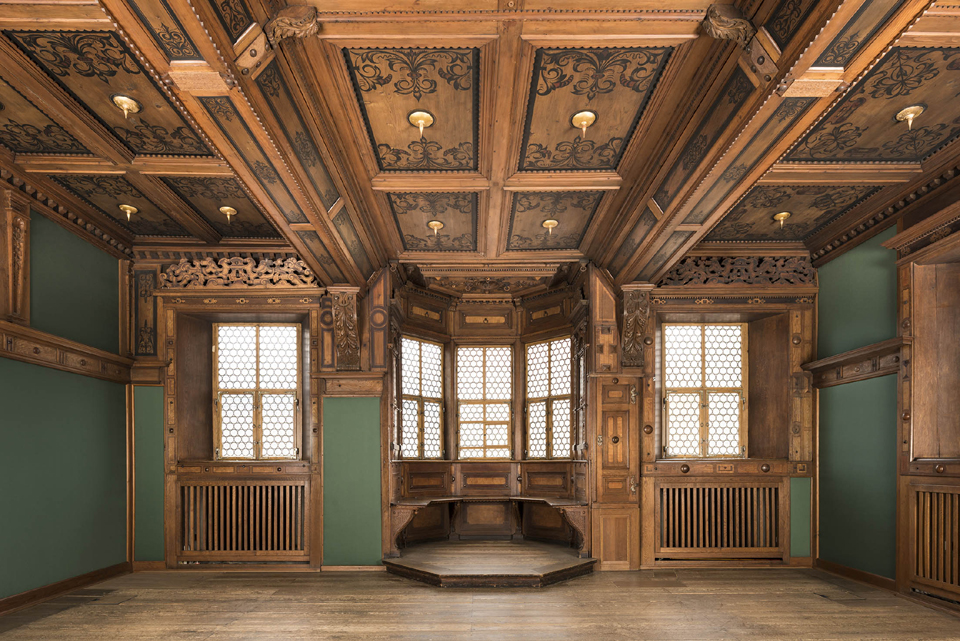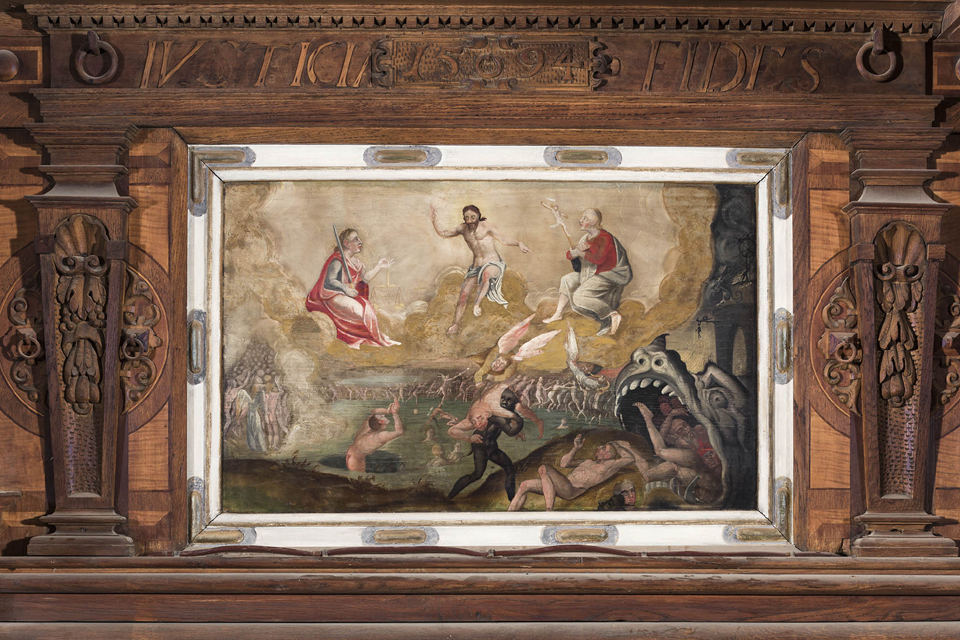The historical rooms in the Talamt building
The rough replica of the Talamt, the official residence of the Halle salt-works managers, was built in 1904 to include two magnificent original rooms: the historical courtroom and the banqueting hall. They are outstanding examples of Mannerism and ostentatious bourgeois culture in the town on the Saale, and attest to the lifestyle enjoyed in its cultural heyday.
The courtroom
The panelling of the courtroom, dated 1594, is considered one of the key works of Renaissance cabinetmaking in Halle. The coffered ceiling is decorated with ornaments and raised strapwork. The walls are adorned with allegorical scenes from the Old Testament, and above the door is a painting of the Last Judgement. The coloured inlaid wood with linear perspectives and carved wooden reliefs in the bay window are thought to be by Augustin Stellwagen.
The banqueting hall
The banqueting hall was built around 1616. With its elaborate portal architecture and richly structured coffered ceiling in radiant colours, the room made a suitable setting for banquets, weddings and receptions. Artistically, the design is memorable for its wealth of ornaments, sumptuous decorations and striking three-dimensional effects. Above the doors framed by columns and entablatures, there are allegorical paintings. The ceiling, decorated with colourful flower tendrils and sculptured rosettes, contains four allegories of the seasons based on sketches by Hendrik Goltzius (1588–1617).
The influences of the art from the Prague court of Rudolf II and the prosperous Netherlands are unmistakable. Here, an as yet unknown local artist has confidently adopted the effects to create his own masterpiece.




